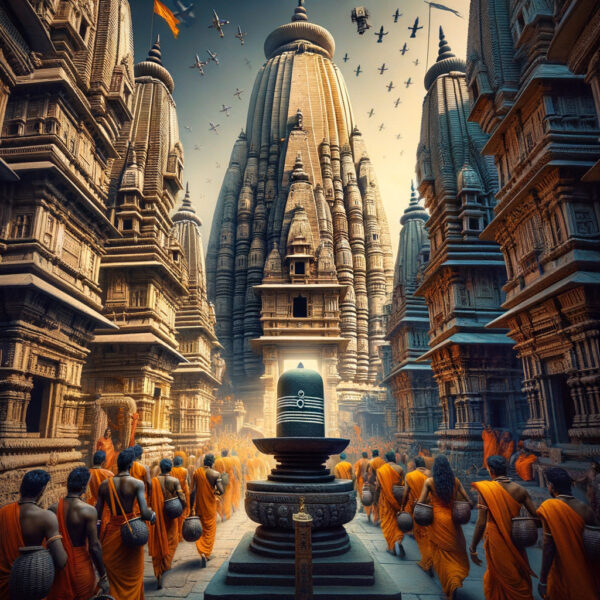Experience tranquility amidst heritage at the venerable Grishneshwar Jyotirlinga, a coveted destination in Maharashtra that pulsates with spiritual energy and bears witness to the rich antiquity of India. The last on the list of the 12 revered Jyotirlingas, this ancient temple in Aurangabad is an oasis of serene spirituality that beckons hordes of faith-driven pilgrims all around the year.

Small temple near Ellora with powerful energy
Fascinating Tale Behind the Grishneshwar Jyotirlinga
The Grishneshwar jyotirlinga is not just a place of worship but a testament to a heartwarming tale of undying devotion and divine intervention. This temple, wrapped in a traditional Maratha architectural design, worth praising for its lack of ostentation and sheer simplicity. Inside the golden sanctum, one can witness the Jyotirlinga, the resplendent symbol of Lord Shiva. The calm spiritual ambiance of the temple provides a beautiful respite for the devotees.
Exploring the Divine Peripheres
The temple’s proximity to the world-renowned Ellora caves and Ajanta caves adds another layer of charm, making it an excellent stopover for history enthusiasts along with Maharashtra pilgrims. Attractions also include the charming Bibi Ka Maqbara and the robust Daulatabad Fort, offering a blend of culture, heritage, and spirituality.
The Venerable Grishneshwar Jyotirlinga: A Beacon of Faith and Devotion
The divine beauty of the Grishneshwar temple lies in the simplicity of its decoration and architecture. The lack of lavish adornment frees the mind to focus on the spiritual aspect, making for a fulfilling and enriching experience. The temple’s potency draws not just local devotees but pilgrims hailing from different corners of the country eager to pay their homage to Lord Shiva.
Embrace the Spiritual Journey with Madhu Tourism
Whether you are an ardent devotee or an eager traveler, Madhu Tourism – Gorakhpur ensures you a smooth, fulfilling journey to the auspicious Grishneshwar Jyotirlinga. So, start planning your spiritual sojourn to this divine destination and unlock an enriching experience of serenity, faith, and devotion with Madhu Tourism.
Frequently Asked Questions
- What is the best time to visit Grishneshwar Jyotirlinga?
The best time to visit is from October to March when the weather is pleasant and suitable for sightseeing.
- How can I reach Grishneshwar temple?
The nearest airport is Aurangabad, 30 km away. From there, one can hire a taxi or take a bus for Ellora. Aurangabad is also well connected by rail and road networks.
- Is photography allowed inside the temple?
No, photography is strictly prohibited inside the Grishneshwar temple premises.
- Are there any accommodation facilities near the Grishneshwar Temple?
Yes, there are numerous hotels and lodges of varying budget ranges in Aurangabad.
- What other places can I visit near the Grishneshwar Temple?
Besides the temple, you can also visit the famous Ellora Caves, Ajanta Caves, Daulatabad Fort and Bibi Ka Maqbara.
Note: This image is AI-generated for illustrative purposes only and does not represent an actual photograph of the location.









